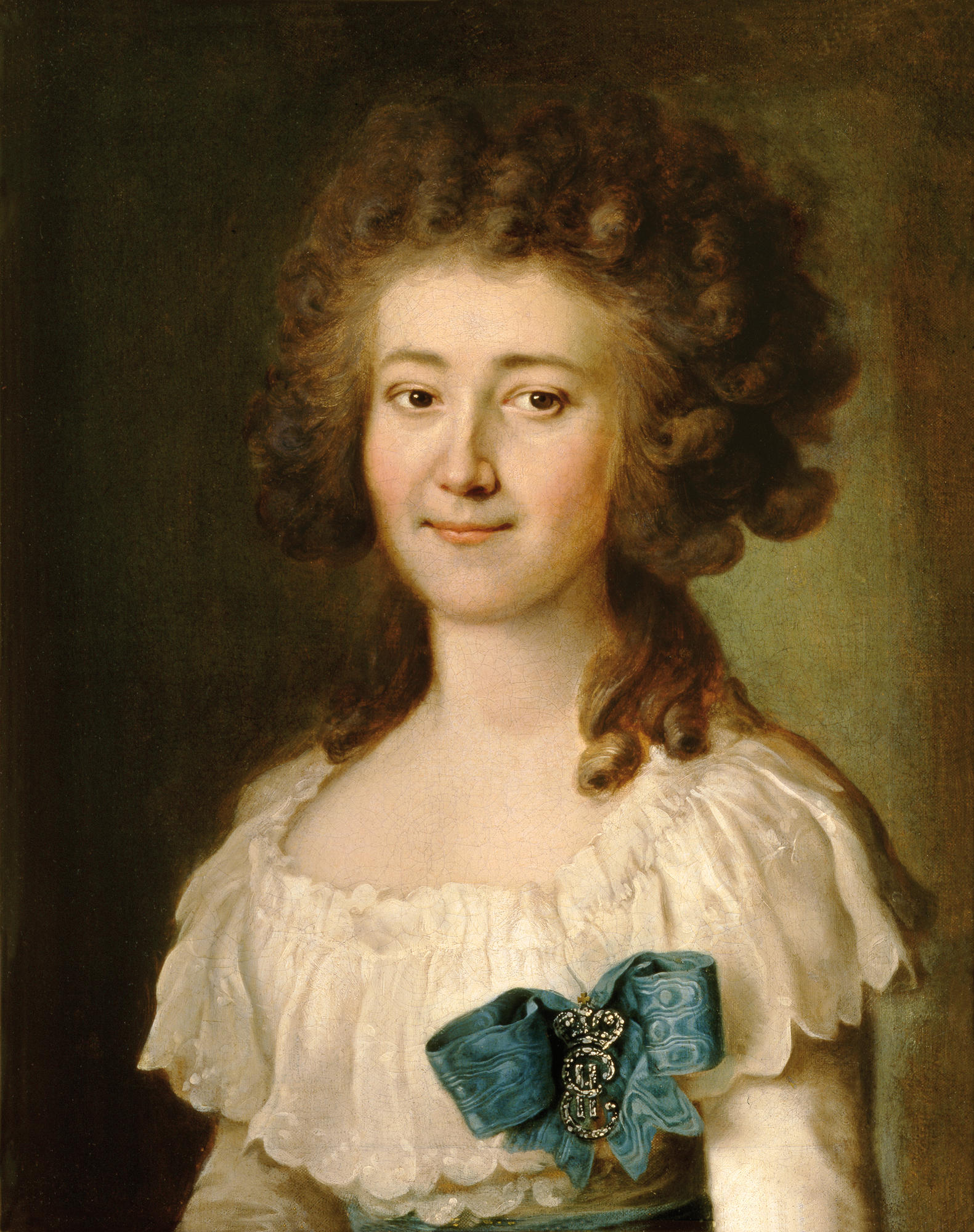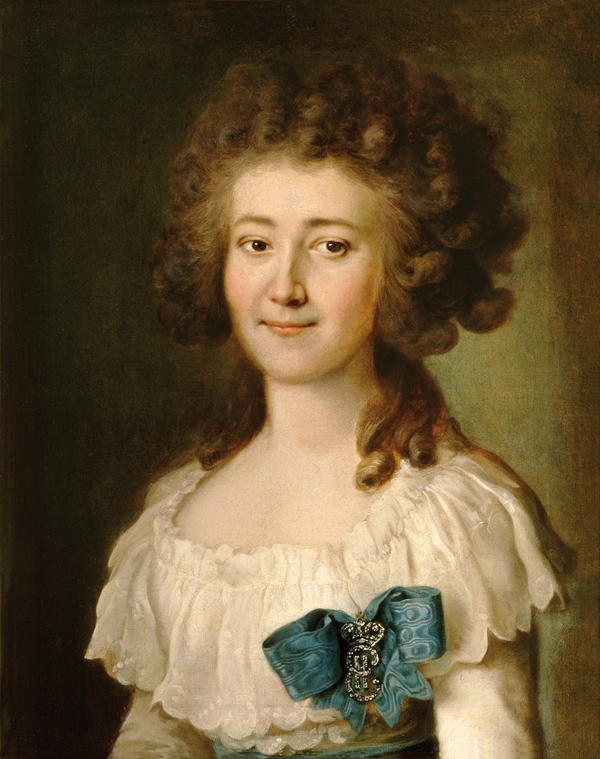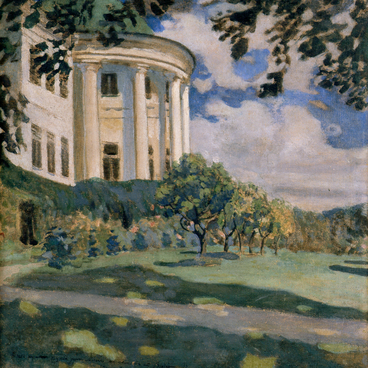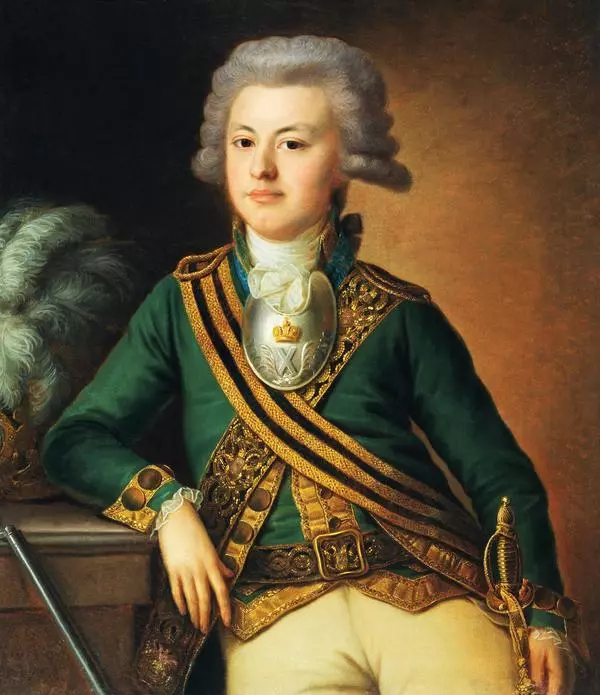The 18th century saw family portrait galleries come into fashion. They created a social-historic, psychological and artistic image of the family. Works by serf masters were an integral part of Russian portraiture of the 18th and first half of the 19th century. Yermolai Kamezhenkov was among such masters.
He was a serf of the Tver archiepiscopal house and an iconography student. Later, he spent about three years as a student of the Gavriil Kozlov School in St. Petersburg. Catherine II paid attention to his works and commissioned him to make a few replicas of pictures held by the Hermitage. The empress must have liked the deliverables, because she issued a decree freeing Yermolai Kamezhenkov from serfdom in 1785.
By that time, his name was already widely known in St. Petersburg as a person who painted high-quality portraits to order. In 1791-1793, Yermolai Kamezhenkov was conscripted into military service, then he lived in St. Petersburg, Moscow, the city of Kashin, and the village of Zabelino in the Tver Governorate, and continued to take orders for painting.
The Academy of Arts appreciated the artist’s talent and mastery: in 1787, Yermolai Kamezhenkov was granted the title of “nominee academician” for his Portrait of a Young Man, and in 1794, the title of academician was conferred on him for the Portrait of I. F. Groot, Honorary Member of the Academy of Arts. As an academician, Kamezhenkov had lots of students, and some of them grew to prominent painters. His own works are now held by the Russian Museum, Tretyakov Gallery, and the picture gallery in Tver.
The Portrait of Yekaterina Vadkovskaya by Kamezhenkov is a companion portrait to that of her husband, Fyodor Vadkovsky, which is kept by the Museum. Both portraits were ordered for the occasion of their marriage in September 1789.
The pin on Yekaterina Vadkovskaya’s dress is the so-called ‘waiting lady cipher’, a gold and diamond monogram of the empress on a ribbon worn on the left side of the bust. Those entitled to the cipher would wear special court dresses with a low neck and a train. The waiting lady’s title was an honour and an advantage: it actually introduced a young lady to the court circle, ensuring a good match for marriage, and provided a dowry from the imperial court for a girl who was not so well off.
Yermolai Kamezhenkov depicted Yekaterina Vadkovskaya wearing a light gauze dress. Such dresses were brought into fashion by Marie Antoinette of France in the 18th century. The simplicity of the style was misleading since only well-off ladies could afford light coloured dresses – they didn’t have to worry the dress could be soiled. Thus, the artist pointed out Vadkovskaya’s status through her portrait.
The Vadkovsky family was quite wealthy and prominent. History and art sources mention their family ties and friendship with some outstanding figures of Russian literature, art, and science, such as Alexander Pushkin, Nikolai Gogol, Nikolai Karamzin, and others.
He was a serf of the Tver archiepiscopal house and an iconography student. Later, he spent about three years as a student of the Gavriil Kozlov School in St. Petersburg. Catherine II paid attention to his works and commissioned him to make a few replicas of pictures held by the Hermitage. The empress must have liked the deliverables, because she issued a decree freeing Yermolai Kamezhenkov from serfdom in 1785.
By that time, his name was already widely known in St. Petersburg as a person who painted high-quality portraits to order. In 1791-1793, Yermolai Kamezhenkov was conscripted into military service, then he lived in St. Petersburg, Moscow, the city of Kashin, and the village of Zabelino in the Tver Governorate, and continued to take orders for painting.
The Academy of Arts appreciated the artist’s talent and mastery: in 1787, Yermolai Kamezhenkov was granted the title of “nominee academician” for his Portrait of a Young Man, and in 1794, the title of academician was conferred on him for the Portrait of I. F. Groot, Honorary Member of the Academy of Arts. As an academician, Kamezhenkov had lots of students, and some of them grew to prominent painters. His own works are now held by the Russian Museum, Tretyakov Gallery, and the picture gallery in Tver.
The Portrait of Yekaterina Vadkovskaya by Kamezhenkov is a companion portrait to that of her husband, Fyodor Vadkovsky, which is kept by the Museum. Both portraits were ordered for the occasion of their marriage in September 1789.
The pin on Yekaterina Vadkovskaya’s dress is the so-called ‘waiting lady cipher’, a gold and diamond monogram of the empress on a ribbon worn on the left side of the bust. Those entitled to the cipher would wear special court dresses with a low neck and a train. The waiting lady’s title was an honour and an advantage: it actually introduced a young lady to the court circle, ensuring a good match for marriage, and provided a dowry from the imperial court for a girl who was not so well off.
Yermolai Kamezhenkov depicted Yekaterina Vadkovskaya wearing a light gauze dress. Such dresses were brought into fashion by Marie Antoinette of France in the 18th century. The simplicity of the style was misleading since only well-off ladies could afford light coloured dresses – they didn’t have to worry the dress could be soiled. Thus, the artist pointed out Vadkovskaya’s status through her portrait.
The Vadkovsky family was quite wealthy and prominent. History and art sources mention their family ties and friendship with some outstanding figures of Russian literature, art, and science, such as Alexander Pushkin, Nikolai Gogol, Nikolai Karamzin, and others.




